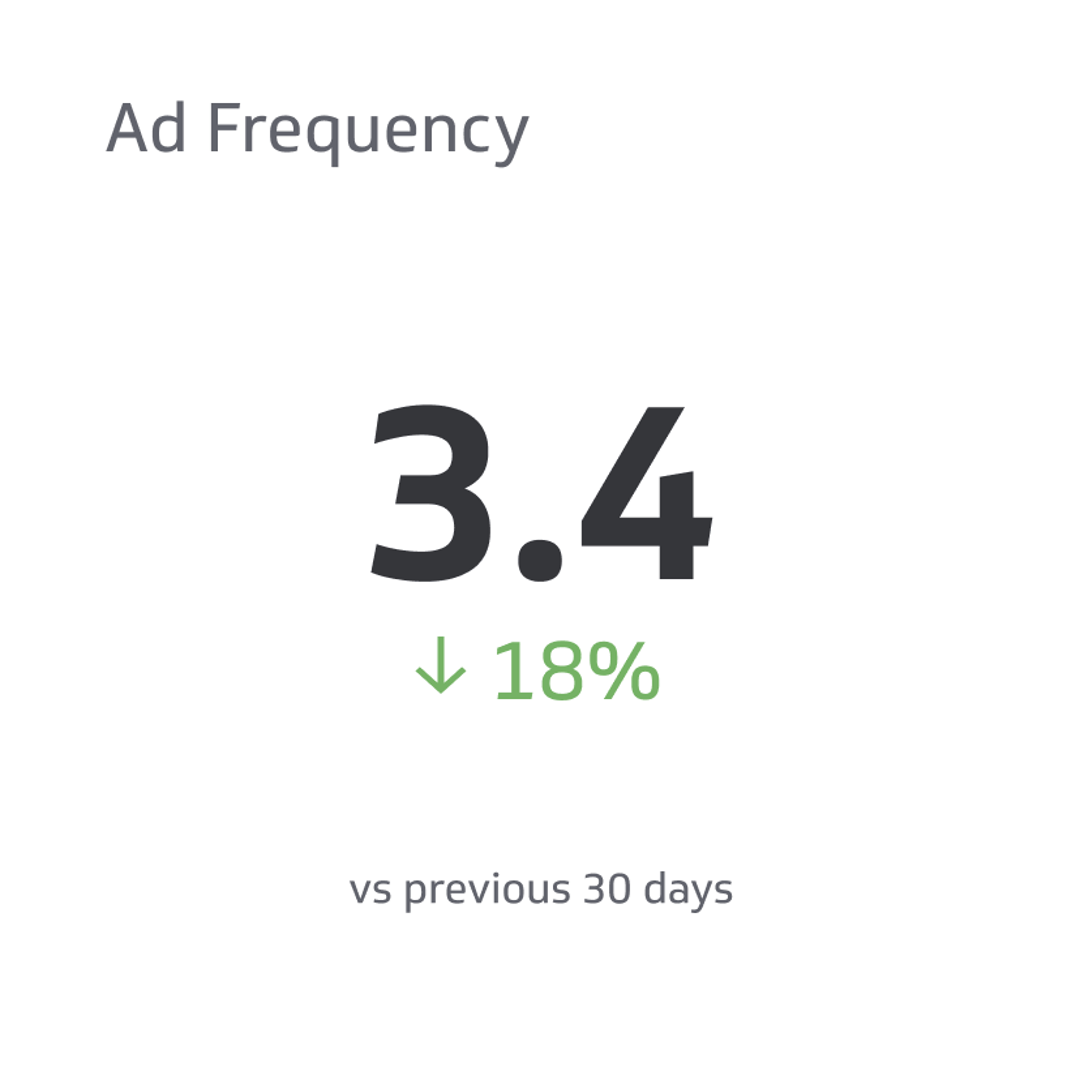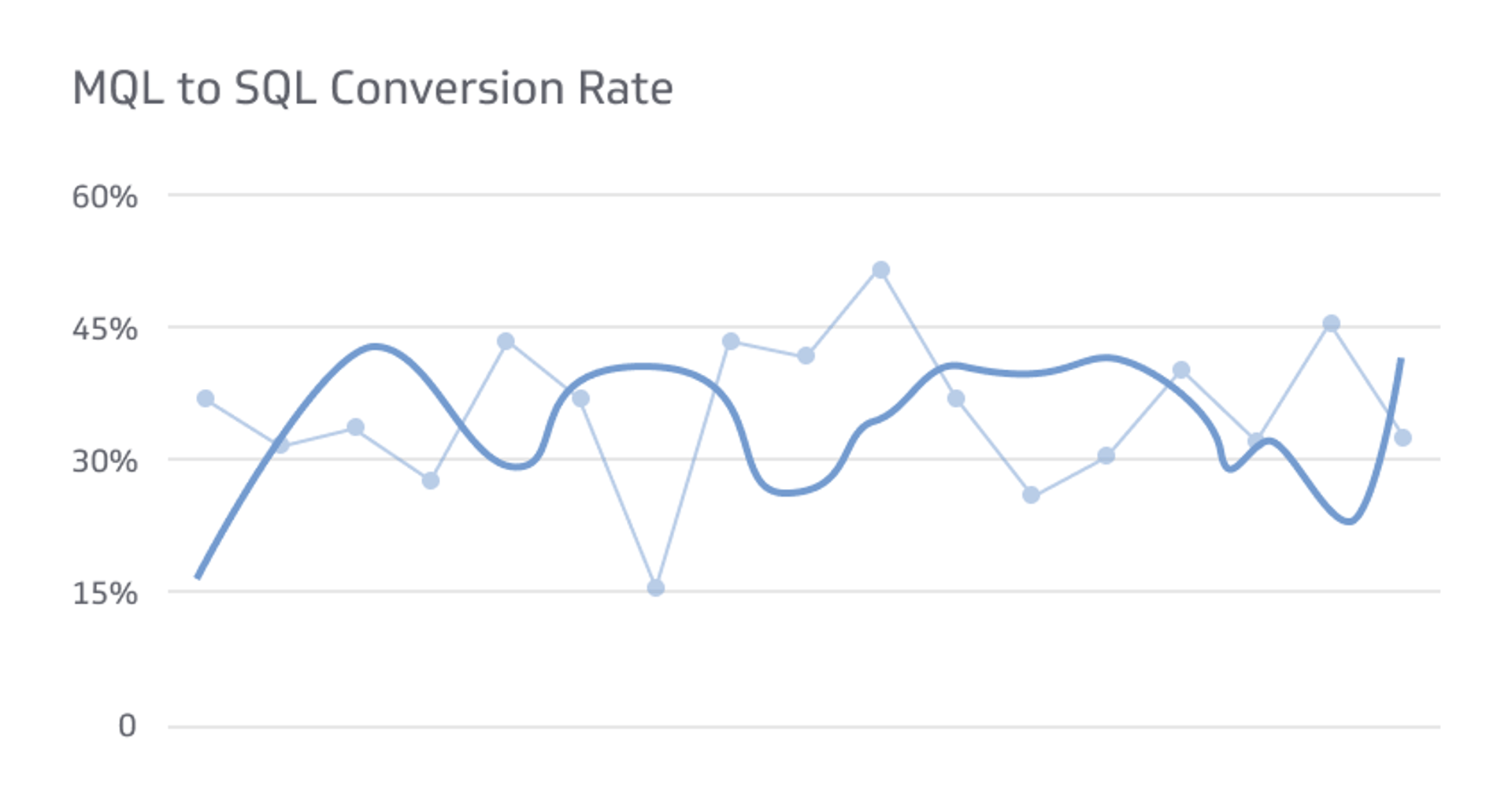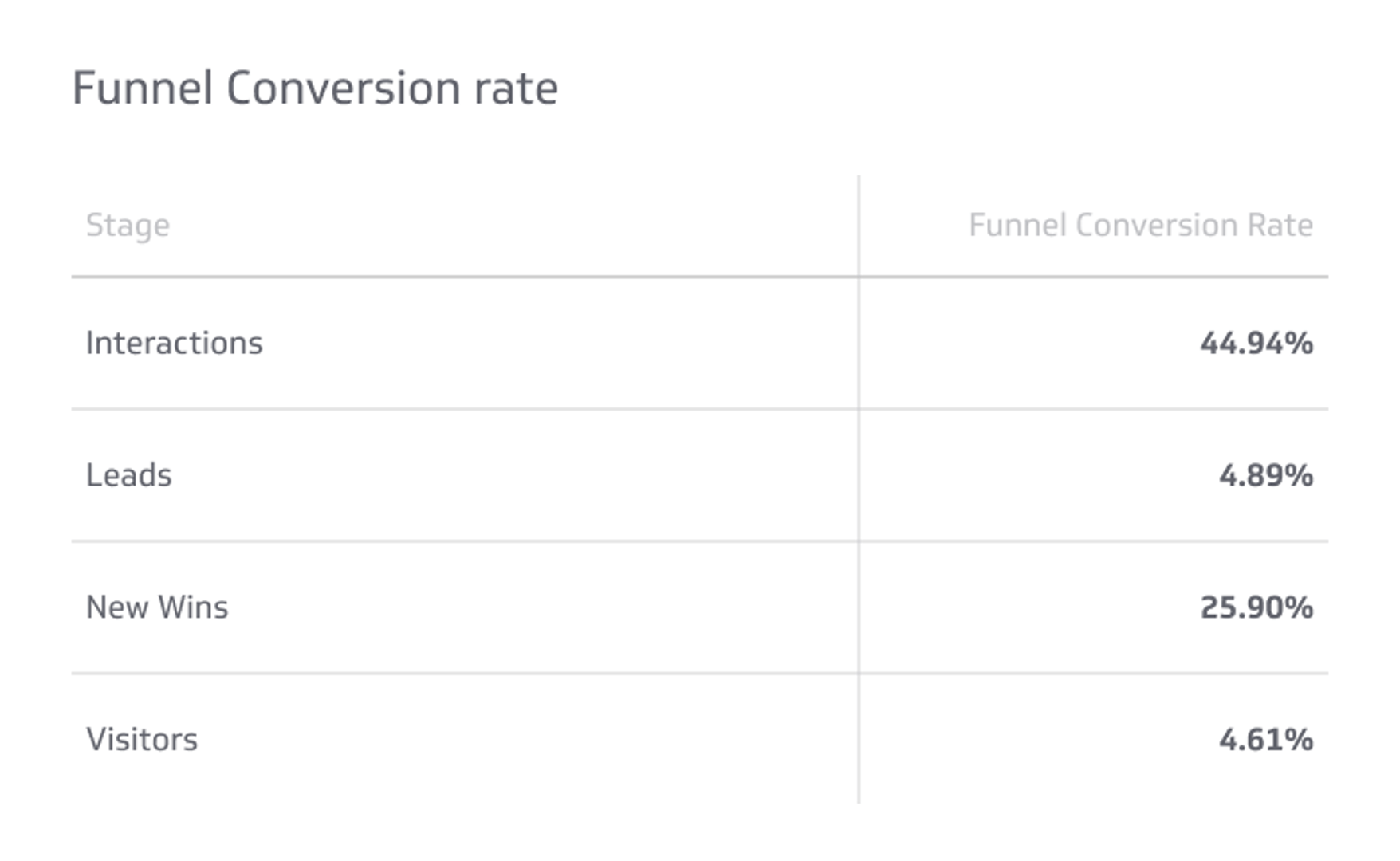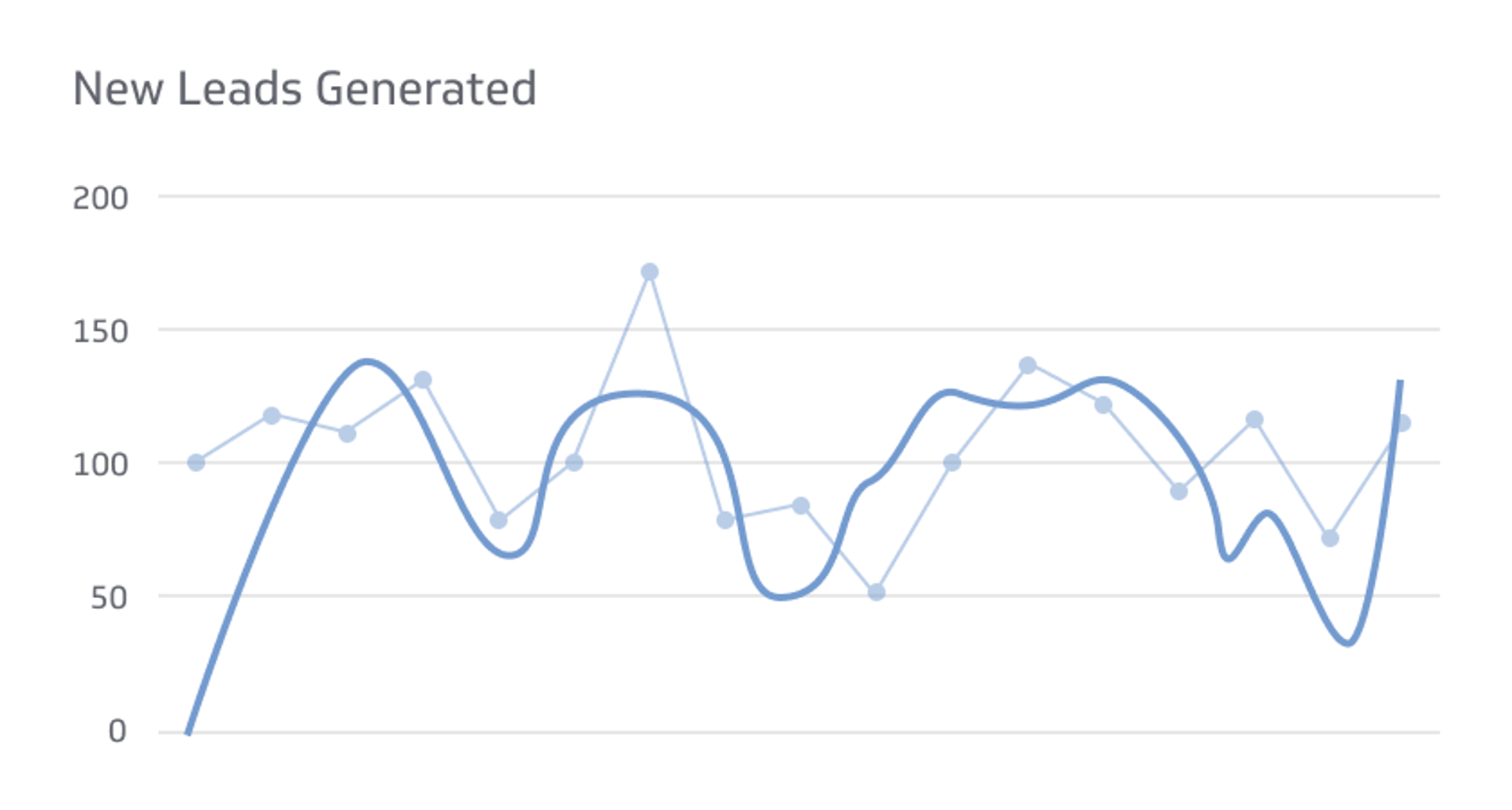Ad Frequency
Ad frequency refers to how many times an advertisement gets shown to a single user over time.
Track all your Digital Marketing KPIs in one place
Sign up for free and start making decisions for your business with confidence.

As the business world becomes increasingly digitized, advertising has shifted online. This shift has created a new set of progress metrics that businesses must understand to succeed.
One such metric is ad frequency, the number of times an advertisement is displayed to a particular audience within a specific timeframe.
In this article, we'll further look at ad frequency, why it's important, and how businesses can optimize their ad frequency to get the best results.
What is Ad Frequency?
Ad frequency refers to how many times an advertisement gets shown to a single user over time. This metric is important because it helps businesses understand how often potential customers see their ads.
For example, if a user sees the same ad three times in one day, the ad frequency for that user is three. Marketers typically measure ad frequency over a set period, such as a week or a month.
Why is Ad Frequency Important?
To help illustrate the importance of ad frequency, let's look at some examples of how different ad frequencies can impact the performance of advertising campaigns.
Optimal Number of Impressions
This metric can help businesses determine the optimal number of times to show an ad to a user. An ad that appears too frequently can become annoying and turn potential customers away. On the other hand, if an ad doesn't show often enough, it may not make enough impact to achieve the required goals.
Budget Maximization
Ad frequency can help businesses maximize their advertising budgets. By understanding how often to show ads to users, businesses can make informed decisions about when to increase or decrease their ad spend.
Improving Ad Relevancy
Managing ad frequency can also help improve the relevancy of your ad to the audience. If you show the same ad too many times, the audience may see it as irrelevant, reducing their engagement with the ad. By managing ad frequency, you can ensure that the ad stays engaging to the audience and has a greater impact.
Controlling Ad Spend
By managing ad frequency, you can ensure you aren't wasting your advertising budget on showing the same ad too many times to the same audience. You can also ensure you’re not spending too much on an audience that is not converting.
Campaign Effectiveness
Finally, ad frequency can also impact the overall effectiveness of an advertising campaign. Studies have shown a "sweet spot" for ad frequency. Showing an ad too few or too many times can decrease its effectiveness.
Marketers can use compelling data to find the perfect number of impressions before an ad has the desired effect and before overexposure and ad fatigue kick in.
How To Calculate Frequency in Advertising
To calculate ad frequency, you need to divide the total number of impressions by the number of unique users who saw the ad.
For example, if an ad has 1,000 impressions and reaches 500 unique users, the ad frequency would be 2. On average, each user saw the ad twice.
Businesses should track ad frequency over some time, such as a week or a month. This duration lets businesses get a more accurate picture of how often their ads appear to users over time.
Additionally, it's important to remember that ad frequency is just one metric that businesses should consider when evaluating the effectiveness of their advertising campaigns.
Other digital marketing metrics, such as click-through rate, cost per acquisition, and conversion rate, are essential to get a complete picture of the campaign's performance.
How to Optimize Ad Frequency
Finding the right balance of ad exposure is essential for advertisers to maximize the impact of their ads on their target audience.
Here are a few ways businesses can optimize ad frequency for maximum results.
Choose a Budget
One of the biggest factors is how much you can spend on advertising. If your budget is limited, it may be better to focus ad frequency on one or two platforms instead of spreading yourself thin across many different platforms and networks.
This will ensure that your advertising efforts are well-spent and effective in reaching potential customers.
Set a Frequency Cap
Businesses need to set a frequency cap. A frequency cap is the maximum number of times an ad can show to a single user over a given time.
Setting a frequency cap ensures that users avoid getting bombarded with the same ad repeatedly, which can lead to ad fatigue and decreased effectiveness.
The exact frequency cap will depend on the specific ad campaign and audience. Generally, a frequency cap of three to five times per week is a good starting point.
Use Frequency Management Tools
Many advertising platforms offer frequency management tools that can help businesses optimize their ad frequency. These tools allow businesses to set frequency caps, monitor ad frequency in real time, and adjust ad frequency as needed.
For example, Google Ads has a "frequency capping" feature that allows businesses to limit the number of times their ads show to a single user per day, week, or month. Facebook Ads also has a similar feature for advertisers.
Test Different Ad Frequencies
Another way to optimize ad frequency is to test different frequencies to see which produces the best results. You can do this by running multiple campaigns with different frequency caps and comparing the results.
For example, a business might run one campaign with a frequency cap of three times per week and another with a frequency cap of five times per week.
By comparing the results of these campaigns, your business can determine which frequency cap is most effective for its audience and adjust its ad frequency accordingly, optimizing resources and saving time.
Monitor Ad Performance
Continuous ad performance monitoring ensures that the selected ad frequency delivers tangible results. You can do this by tracking key performance indicators (KPIs) such as click-through rate (CTR), conversion rate, and cost per conversion.
Users might get annoyed when ad frequency is too high, causing KPIs to drop. But, to reach KPIs, ads must be displayed frequently enough for successful exposure.
By monitoring ad performance and adjusting ad frequency, businesses can ensure that their ad frequencies maximize results.
Create Custom Audiences
Custom audiences allow businesses to target specific groups of users based on their interests, behaviors, or demographics. By targeting custom audiences, businesses can ensure that their ads show to the most relevant users, which can increase ad engagement and effectiveness.
You can also help reduce ad frequency for users not part of the custom audience. Only people in the targeted groups will get to see the ad.
For example, a business might create a custom audience of users who have previously purchased on their website.
Targeting this custom audience with ads promoting related products can increase the likelihood of a repeat purchase while reducing ad frequency for users who haven't made any purchases.
What is Bad Frequency in Advertising?
Bad frequency in advertising is when an ad is shown to the same user too many times over a short period, leading to ad fatigue and decreased effectiveness.
Ad fatigue occurs when a user becomes bored or annoyed with seeing the same ad repeatedly, which can decrease engagement and click-through rates.
When ad frequency is too high, users may ignore the ad or even develop negative feelings toward the advertised brand. The result can be wasted ad spend and substantive damage to the brand's reputation and customer relationships.
In addition to ad fatigue, the bad frequency can have other negative consequences, such as decreased click-through rates, increased cost per click, and decreased return on investment (ROI).
Related Questions
How Does Ad Frequency Impact the Cost Of Advertising?
Ad frequency can impact the cost of advertising by affecting the click-through rates (CTR) and conversion rates (C.R.) of the ads. If an ad shows too frequently, it can lead to ad fatigue and decreased CTR and C.R., resulting in higher costs per click (CPC) and acquisition (CPA).
For advertisers with a large market share, a frequency cap of at least 1 to 2 per week can capture a substantial portion of the potential brand impact.
How Does Ad Frequency Differ Across Different Advertising Channels (E.G., T.V., Radio, Digital)?
Ad frequency can differ across different advertising channels. For instance, T.V. and radio ads may have a set frequency per hour or day, while you can adjust digital ads in real time based on user behavior and engagement.
Digital advertising platforms like Google Ads and Facebook Ads also provide options for setting frequency caps to control how often an ad is shown to a user.
Conclusion
Ad frequency has become an essential metric for businesses to understand and optimize. By understanding the impact of ad frequency and taking steps to optimize it, businesses can ensure that their advertising campaigns are as effective as possible in reaching and converting potential customers.
Related Metrics & KPIs



